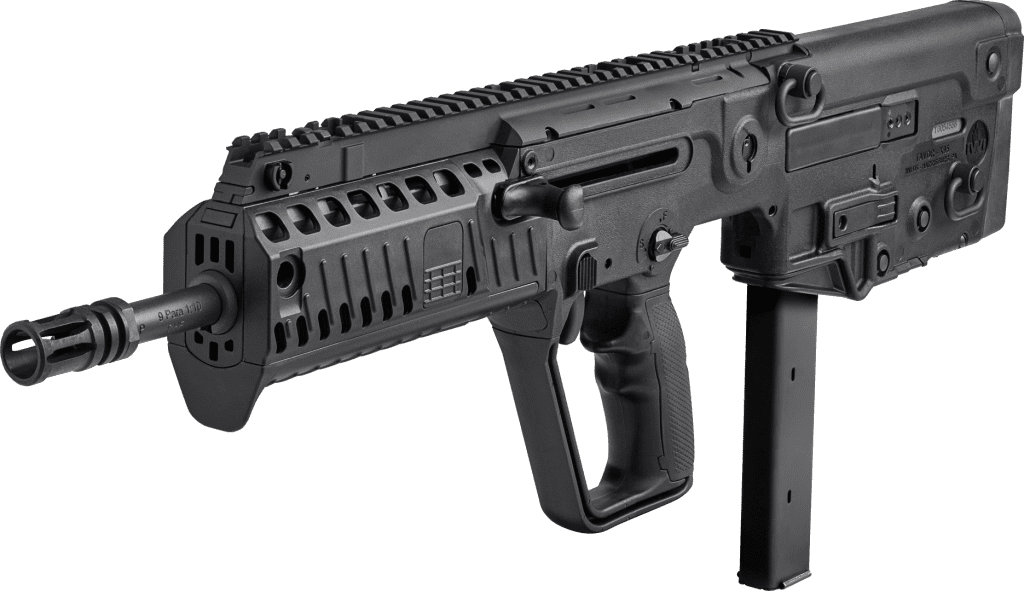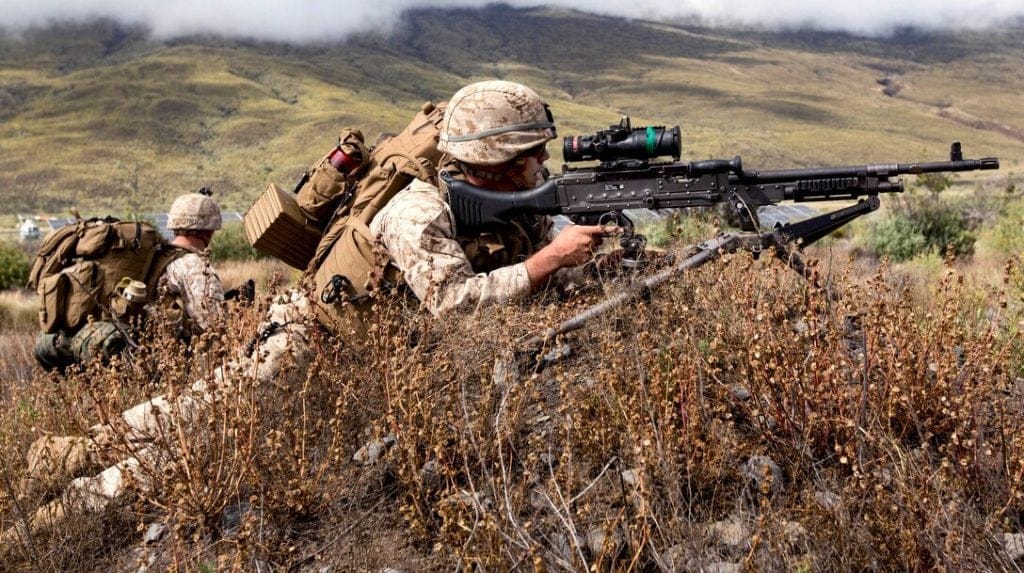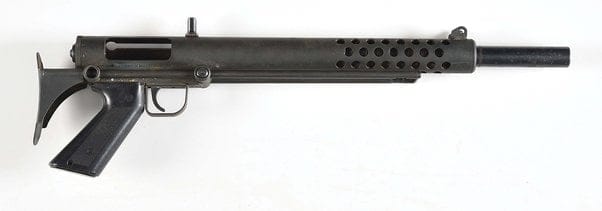As a former machine gunner for the United States Marine Corps, I have a fairly good understanding of the concepts of open and closed bolt guns, but I also know that they are not always widely understood. Understanding the differences between open and closed bolt guns is a great way to understand the history of firearms and the routes firearm advancement has taken.
Understanding the difference between the two operating systems allows you to understand why the HK MP5 was legendary, how machine guns function so effectively, and why it’s tough to find open bolt weapons on the civilian market. We’ll dive deep today, and you’ll have a fantastic understanding of open-bolt and closed-bolt systems.
Terminology: Open and Closed
Open and closed terminology refers to the bolt’s status when it is ready to fire. Many closed-bolt weapons allow you to lock the bolt to the rear, but that doesn’t mean they are open-bolt guns.
When you pull the trigger on an open-bolt firearm, the bolt is released and springs forward. It will typically pick up a cartridge from a magazine or belt and stop its movement when it reaches the chamber of the weapon. When the bolt reaches the chamber, the weapon fires. The bolt then flies rearward, completing the cycle of operations. If it’s a semi-auto weapon, the bolt will lock into its rear position. If it’s fully automatic, the bolt will continue to cycle back and forth until the trigger is released or the shooter runs dry.

A closed bolt weapon fires when the bolt is completely closed. Depending on the weapon’s design, a locking mechanism may prevent the bolt from opening too early. Guns like the MP5 use rollers, and the AR-15 uses a rotating bolt system, but there are several other systems.
With a closed-bolt weapon, the cartridge rests in the chamber prior to firing the rifle. When the weapon fires, the bolt is then driven rearward by either a direct blowback or a gas-operated system. As the bolt retracts rearward, it extracts and ejects the spent cartridge and cocks the hammer or striker. The bolt then travels forward, picking up the next round of ammunition and closing it into the chamber.
Open-Bolt Pros and Cons
Open-bolt platforms are regulated mostly to weapons with automatic fire capability. There was a time when essentially any full auto weapon used the open-bolt design due to its simplicity. World War II-era submachine guns, in particular, were open-bolt designs because they were simple and affordable to manufacture and produce. The firing pin is often fixed to the bolt, and when it flies forward, it fires the weapon. This eliminates the need for hammers, strikers, and plenty of springs.

Another benefit is their ability to sustain fully automatic fire. The open-bolt design allows the bolt and chamber to cool, which also prevents cook-offs. A cook-off occurs when the chamber and bolt are so hot that the round fires without the trigger being pulled. With most guns, this isn’t an issue, but with fully automatic weapons and sustained fire, it quickly becomes one. An open-bolt weapon’s ammunition remains in the magazine or belt until it is fired.
The downsides include the lack of a drop-safe firearm, and it’s very easy for open-bolt firearms to go off when dropped. Modern options like the FN M240 are much safer but are still carried with the bolt forward and chamber empty. These guns rely on a bolt mechanism, and these mechanisms can fail.

There is also a reliability factor. While open-bolt guns can be quite reliable, they have a higher likelihood of failing to fire on the first shot. Enough so that the SOP for Marine Corps infantry is that the open-bolt weapon does not fire the first shot in an ambush, and if possible, the open-bolt is never the first one through a door to clear rooms. Lightweight open-bolt guns can have accuracy issues due to the weight of the bolt shifting forward on the first shot.
Closed Bolt Pros and Cons
Closed-bolt guns are the more reliable option. They tend to have fewer issues since the bolt and ammunition are in place before the trigger is pulled. They’re also more accurate since the bolt isn’t traveling forward immediately after you pull the trigger. There is also significantly less lock time and less of a ka-chunk if you have a first-round failure. For the military, the ka-chunk of an open-bolt gun can give away an ambush position.

Closed-bolt guns can be significantly quieter when fired suppressed. When we come to submachine guns, the closed-bolt design can utilize systems outside of direct blowback. Direct blowback works but creates excessive recoil compared to something like a radial delayed design. Closed-bolt weapons, as a whole, are much safer and can be carried in a ready status.

The downsides are fairly small. A closed-bolt weapon isn’t as capable of sustained fire as an open-bolt gun. When you are shooting hundreds of rounds of ammunition in a short period of time, a closed bolt firearm could suffer from a cook-off and overheating issues. For most individual weapons, a closed-bolt design makes the most sense.
What Open-Bolt and Closed-Bolt Looks Like Today
In the current market, the closed-bolt design is more common, including military weapons. For modern guns, the only open-bolt designs that are common are belt-fed machine guns. These guns are the few that benefit from the open-bolt design. Guns like the FN M240 and M249, for example, are belt-fed, full-auto-only, open-bolt machine guns.

Everything else is basically a closed-bolt design. Closed-bolt designs dominate the rifle, SMG, handgun, and shotgun realms. For firearms outside of belt-fed machine guns, a closed bolt design just makes sense.
It bears mentioning that several guns can be both open-bolt and closed-bolt. The Infantry Automatic Rifle genre is the most common one to see this feature. The SCAR HAMR, the old-school FG42, and the LWRC M6A3 rifle all have a closed-bolt and open-bolt option.
Regulation of Open-Bolt Guns Today
There is a bit of a misunderstanding regarding the regulation of open-bolt firearms today. A lot of folks think they are downright banned. This comes from the 1980s when the Cobray MAC and Intratec semi-auto pistols were released in open-bolt configurations and subjected to ATF enforcement. The ATF had an issue with these guns because they were very easy to convert to full-auto. There is a regulation that essentially states a gun cannot be easily converted to full-auto.

Open-bolt rifles and shotguns have been released and faced no regulation because they were not easily convertible to full-auto. This includes the Winchester Model 55 and the Cobray Terminator. Both were open-bolt guns but were also single-shot guns, so they could not be converted to full-auto. Companies could theoretically produce open-bolt guns for the general public—but no one wants them.
Open-bolt guns are quite a niche these days. I’m still looking hard to find a Winchester Model 55 because a single-shot, open-bolt .22LR seems so cool and silly. Now that you know the difference between open and closed bolt guns, go forth with a little more education about the world of firearms.

